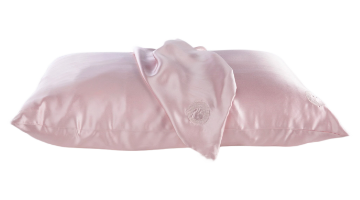Narcolepsy Guide: Signs & Treatments to Relieve Narcolepsy
Last Updated on April 9, 2025
by Marc Werner, Founder - GhostBed

Although narcolepsy can cause one to have sudden bouts of sleep during the day, it can also work to cause disruption in getting the proper restorative sleep at night. It is vital to understand what narcolepsy is and treatments available, in order to help the body get the proper sleep it needs to live healthy.
I. What is Narcolepsy
II. 6 Signs & Symptoms of Narcolepsy
III. What Causes Narcolepsy
IV. 8 Treatments & Lifestyle Changes to Help
IV. Conclusion
When night time falls, narcoleptics who commonly find themselves feeling sleepy all day and fight bouts of sudden sleep, can turn into insomniacs. Along with having the best mattress for inviting sleep, one should understand narcolepsy and get the proper treatment to achieve proper slumber and a normal lifestyle.
I. What is Narcolepsy
The enduring sleep disorder known as narcolepsy is defined by an unyielding drowsy feeling, as well as moments of suddenly falling asleep, during the daytime hours. With the constant sleepiness, those stricken have difficulty with keeping their eyes open long enough to conduct normal activities.
The central nervous system disease of narcolepsy can also cause a sudden muscle tone loss known as cataplexy. A robust emotional outburst, such as laughter or intense anger, can spark this condition.
Narcolepsy is not gender specific and usually starts during the years of teens to young adults. With daytime drowsiness as the first symptom, the affected individual is often misdiagnosed at first. To get the correct treatment the finding of narcolepsy will hopefully be realized as symptoms get more pronounced. There are times that cataplexy may occur prior to the sleepiness symptoms.
The chronic illness of narcolepsy has no cure, but there are ways to manage the sleep disorder. Changes in lifestyle, as well as medications, are often used to keep narcolepsy under control.

II. 6 Signs & Symptoms of Narcolepsy
Daytime sleepiness and abrupt sleep are the most common signs of narcolepsy. Cataplexy is also very common in people with this condition. Other symptoms that a narcoleptic can experience are hypnagogic hallucinations and sleep paralysis.
Narcoleptics who experience cataplexy, hallucinations, and sleep paralysis are diagnosed to have REM related abnormalities. This is because these conditions occur by disturbances into wakefulness during REM sleep.
1) Extreme Daytime Sleepiness
Extreme drowsiness and sudden nodding off to sleep at any moment is common in those with narcolepsy. This can have an adverse impact on one’s work and social life. It can also cause a dangerous situation for anyone with this condition who is driving a vehicle.
A narcoleptic can go from extremely tired, to dropping suddenly to sleep in the middle of a daily activity. Sleep periods generally can be run from couple of minutes to 30-minutes. Once the person wakes he or she may feel momentarily refreshed before the sudden sleep happens once again.
2) Sudden Muscle Tone Loss
The condition of cataplexy which causes sudden loss of muscle tone can affect any of the muscles in the body. Muscle weakness can cause slurring of the speech, as well as overall loss of strength in all muscles. This condition can last from just seconds to several minutes.
Strong emotions are what drives cataplexy. Immense laughter may cause an episode that can result in the body dropping from loss of muscle control. Not every narcoleptic will suffer from cataplexy. Those who do may only see a rare incident, while others may experience a number of events in a day.
3) Hypnagogic and Hypnopompic Hallucinations
Hypnagogic hallucinations occur as one falls asleep and the hypnopompic happen when waking. Approximately 50-percent of narcoleptics will experience the hallucinations. These are much like a scary nightmare that seems real. Since the person is partly awake during the hallucination the dream is viewed as a frightening actuality.
4) Sleep Paralysis
Although not all who experience sleep paralysis have narcolepsy, it is a symptom for those with the condition. Sleep paralysis is a momentary incapability to move or talk as one falls asleep or wakes up. The scary condition generally lasts just seconds or minutes in which after the affected individual may not remember that it even happened.
All people experience a temporary paralysis during the rapid eye movement (REM) stage of sleep when dreaming usually happens. It is thought that temporary paralysis keeps the body from acting out the motions in dreams. Sleep paralysis has the same characteristics of the normal REM stage activity.
5) Disturbed Nighttime Sleep
Those suffering from narcolepsy can experience a disturbance in sleep at nighttime. Sleep apnea, restless legs syndrome, and insomnia can all affect a narcoleptic. People with the sleep disorder can also find themselves waking from dreams that cause one to scream and act out. For 16-Tips on how to fall asleep faster, check out our guide here.
6) Automatic Behavior
The narcoleptic may experience automatic behavior. These are behaviors that occur while the person is in a state between being awake and sleep. The narcoleptic may begin an activity while awake and then continue it, without realizing, into a semi-sleep state. Once awake there is no recollection of any behavior performance. This can cause a danger if the automatic behavior involves an activity such as driving a vehicle.
III. What Causes Narcolepsy
Although the exact cause of narcolepsy has not been determined it has been discovered that many with narcolepsy have abnormally low levels of hypocretin neurons. These nerve cells are in the hypothalamus part of the brain and work to secrete neurotransmitter substances, the chemicals that send messages to other cells.
In narcoleptics abnormalities affecting structure and performance have been seen in the neurons. The hypocretin system irregularities could be the cause for the narcolepsy symptoms of excessive drowsiness and issues with REM sleep.
A certain human leukocyte antigen (HLA) has been linked to narcolepsy. HLAs work for the body as part of its immune system. Higher than normal HLA in narcoleptics suggest that narcolepsy should be classified as an autoimmune disease. The brain’s nerve cell loss in narcoleptics is thought to be an autoimmune response.
Although those who have a relative with narcolepsy may be subject to developing the condition, it has not been proven just how it is passed on.

IV. 8 Treatments & Lifestyle Changes to Help
There are several drug treatments to help those live with narcolepsy. In addition, small lifestyle changes can be made to help those suffering from the condition find a bit of comfort.
1) Sleep Schedule
It may be helpful to have a strict sleep schedule & determine how much sleep you need (i.e. go to bed and wake up at the same time every night and morning). In addition, planning regular naps of at least 15-minutes, or longer, during the day may help in controlling the sleepiness symptom.
2) Dietary Restrictions
One who is struggling with narcolepsy should avoid large meals that can promote sleepiness, as well as alcohol and caffeine that can impede on proper sleep.
3) Exercise
Regular exercise can act as a stimulant to help promote alertness during daytime hours and help with sleep at night.
4) Light Therapy
Exposing the narcoleptic to sun light, as well as lighting to simulate daylight, may help to keep sleepiness at bay by keeping the patient more alert.
5) Stimulants
The main form of drug treatment for narcolepsy is the use of stimulants that work to invigorate the central nervous system. A medical professional will determine what course of drugs will work the best for each patient.
6) Serotonin Antidepressants
Two types of serotonin inhibitor medications may be considered to prescribe to the narcoleptic. These are selective serotonin reuptake inhibitors (SSRIs) and serotonin and norepinephrine reuptake inhibitors (SNRIs). These types of drugs are known to keep REM sleep in check to work to lesson cataplexy, hallucinations, and sleep paralysis symptoms.
7) Tricyclic Antidepressants
Tricyclics are an older type of antidepressants that may work better than the newer serotonin but could have more uncomfortable side effects. These are prescribed for REM related abnormalities.
8) Sodium Oxybate (Xyrem)
Sodium oxybate, or gamma-hydroxybutyrate (GHB), is FDA approved for treatment of excessive daytime sleepiness and cataplexy. Commonly the medication is given first at bedtime and then a second dose four hours later. This drug works to better the important nighttime restorative sleep in order to lesson daytime sleepiness and cataplexy. As it can cause drowsiness it should only be used at bedtime hours.
V. Conclusion
Narcolepsy can be a very frustrating sleep disorder as it is a chronic illness with no real cure. It is important to understand what the condition is and how it affects one to get the best treatment possible to keep it under control.
To aid in assisting in nighttime restorative sleep one should make sure to have the best GhostBed mattress along with cooling GhostBed pillows and the most comfortable of bedding.
Marc has spent the last two decades designing & manufacturing mattresses and other sleep products, drawing on a lifetime of experience working with the material sciences. With several patents to his name, he works closely with the GhostBed team to create products with the perfect balance of comfort & support. Learn More




